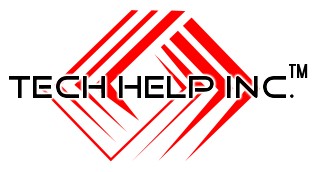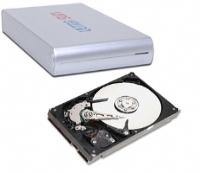

| | | | | | | |||||||
| | | | | | ||||||
| | | | ||||
IDE & EIDE (Integrated Device Electronics & Enhanced Integrated Device Electronics)- the IDE type of hard disk drive has been in
use since the late 1980s. The purpose of the IDE was to integrate the drive controller with the drive itself rather than use a separate
controller card. The Advanced Technology Attachment (ATA)-the official name for IDE drives-standard is based on the original IBM AT
standard for hard disk drives. However, the early IDE hard disk drives had a limitation on the maximum cylinder, head, and sector (CHS)
values, which in turn limited the maximum size of a hard disk drive that a system BIOS (Basic Input/Output System) would recognize to
528 MB. This was called the 528MB barrier. Years later, with the introduction of the Enhanced Integrated Device Electronics (EIDE)
hard disk drive, and a feature called Logical Block Addressing (LBA), we were able to manipulated the maximum cylinder, head, and
sector (CHS) values of a EIDE hard disk drive, which in turn led to the breaking of the 528 MB barrier. Years later, the next barrier that
we would face would be the 8.4 GB barrier. To overcome the 8.4GB barrier we needed a system BIOS (Basic Input/Output System) that
supported enhanced interrupt 13h extension for very large drives. Newer computers came with bulit-in support in the system BIOS for
the enhanced interrupt 13h extension, but if you had a older computer you had three options to overcome the 8.4GB barrier; (1)
upgrade your computer's system BIOS, (2) install a hard disk drive adapter with interrupt 13h support, or (3) use a software program
from the hard disk drive manufacturer to allow the system to access the drive.
SCSI (Small Computer System Interface) - was introduced in 1979 as a high performance interface, allowing connection of both
internal and external devices. Because it runs on virtually any operating system, it was adopted by the American National Standards
Institute (ANSI) Standards Committee and is now an open standard in its third generation. At its core, a single SCSI controller can
handle up to 15 devices connected either internally or externally, making it the only interface that can handle such a wide variety of
devices. Therefore, SCSI has become the mass storage device of choice for large network installations. In the 1970s, Shugart
Associates developed an interface to handle data transfers between devices, regardless of the type of devices. The interface operated
at the logical or operating system level instead of at the device level. This new interface was called the Shugart Associates System
Interace (SASI) or (SCSI 1). SCSI 1 can support up to seven devices on a chain (plus the host adapter), each of which transferred
data through an 8-bit parallel path. The 8-bit parallel barrier of SCSI 1 was crossed with the development of SCSI 2. SCSI 2 became the
interface of choice for faster hard disk drives, optical drives, scanners, and faster tape technology. SCSI 2 supported the following
types of interfaces; wide (16-bit) SCSI, Fast SCSI, Fast/Wide (combines fast and wide SCSI features), Ultra (32-bit) SCSI SI-2, and
was backward compatible with SCSI 1. Fast SCSI 2 was the next improvement, with data transfer speed from 5MB/s to 10 MB/s. Wide
SCSI 2 was next , with transfer rate of 20MB/s of data, doubling that of Fast SCSI 2 (10MB/s). All SCSI 2 devices are supported by the
newer SCSI 3 card. SCSI continues to be the device of choice for systems in which speed and compatibility are important. The ability of
the SCSI format to provide fast and efficient fault tolerance for network systems through the use of redundant array of independent
disks (RAID) will keep it the drive of choice for networks. Although not required, the SCSI drive is generally preferred over IDE drives by
Windows NT and 2000 system designers for its performance and flexibility. However, SCSI continues to be more expensive that IDE, but
SCSI's ability for RAID, hot swapping (changing drives without shutting down a system) and machine independence will keep it popular
for workstations and servers.